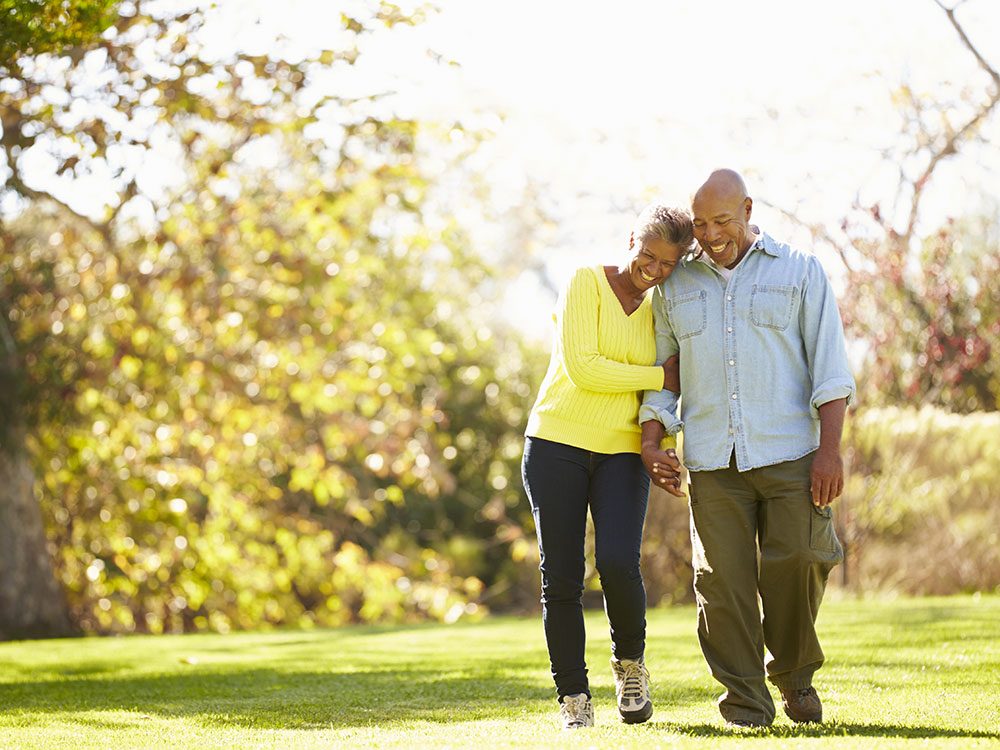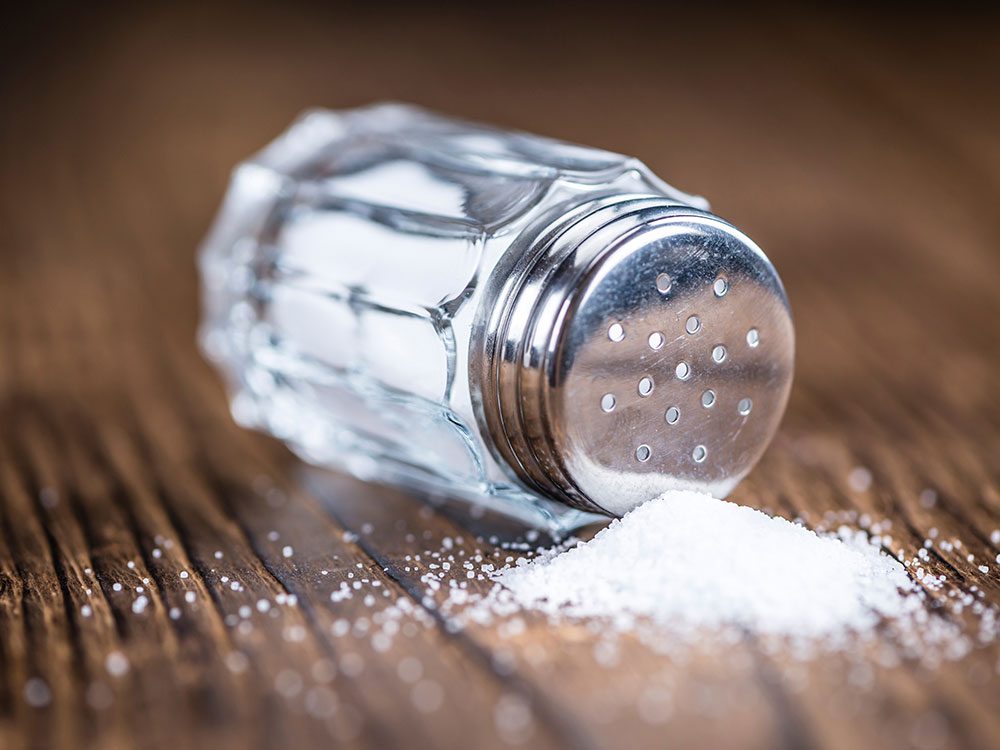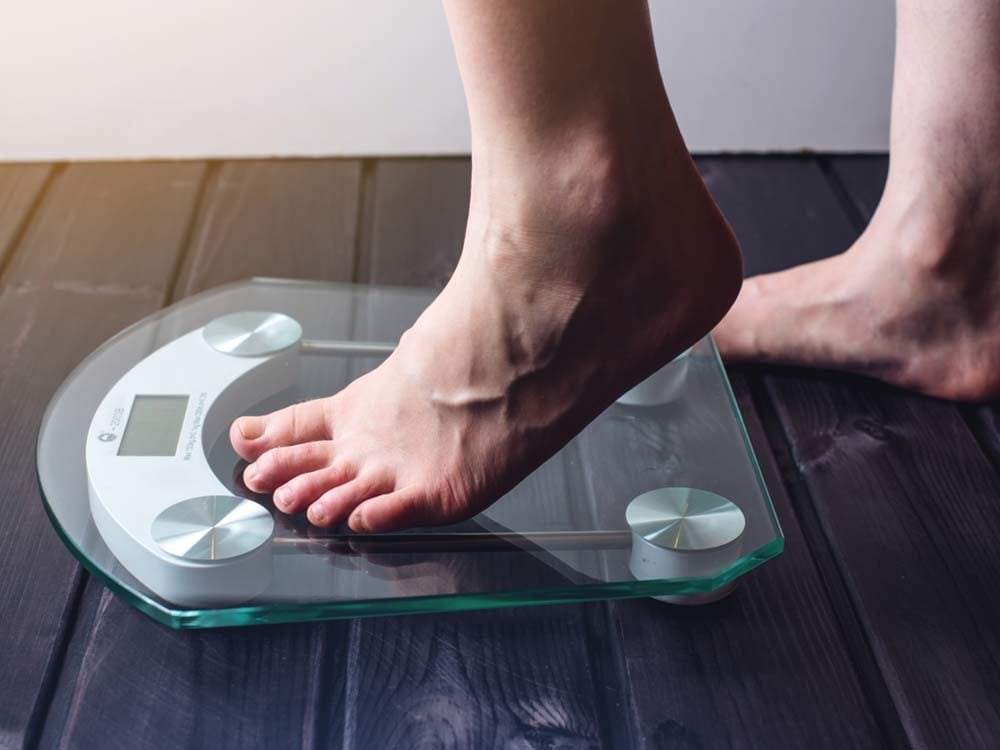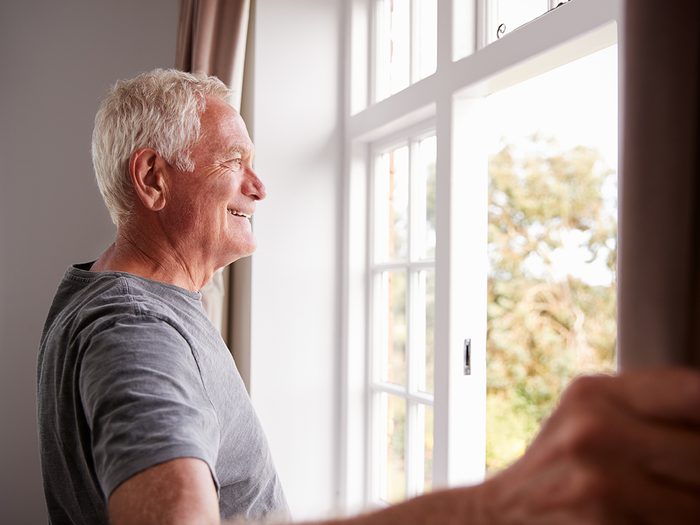
Move more
One of the key risk factors for osteoporosis is a sedentary lifestyle.
“Bone is a living tissue,” says Gareth Sneath, a physiotherapist with the Orthopaedic Therapy Clinic in Toronto. “So subjecting them to physical stress during daily activities is important for maintaining their strength.” For bones, he says, “if you don’t use it, you lose it” is true.
Incorporating multiple sessions of weight-bearing exercises, balance training and strength training into your weekly routine is ideal for increasing bone mineral density and reducing your risk for osteoporosis, but even a daily brisk walk is better than nothing at all.
Find out what happens to your body when you start walking 10,000 steps a day.

Curb your salt intake
A 2013 study from Japan of 213 post-menopausal women showed that those who had a very high average sodium intake of 7,561 milligrams per day—more than three times the daily maximum amount recommended by Health Canada—were more than four times as likely to have a fracture as those with lower levels. That’s because as the kidneys excrete the sodium, calcium is drained from the bloodstream.
Learn to spot the signs you’re eating too much salt.

Catch some rays
“The body produces vitamin D when exposed to sunlight, which in turn helps it absorb the calcium needed for bone health,” says Sneath. “In the winter months, less exposure to sunlight means less vitamin D is produced, and supplements can be required.”
According to Osteoporosis Canada, adults under 50 need 400 to 1,000 international units (IU) of vitamin D daily to reduce the risk for osteoporosis—and adults 50 and older need 800 to 1,000 IU. If you’re not getting out into the noonday sun for at least five to 15 minutes a day, several times a week, talk to your doctor about supplementation based on where you live, the time of year and which vitamin D-rich foods you eat.
Here’s something to keep in mind if you’re taking vitamin D supplements.

Maintain a healthy weight
Reaching a healthy weight is good, but losing too much weight can harm your bones. A body mass index (BMI) of less than 18.5 increases your risk for osteoporosis. According to a study from the Harvard T.H. Chan School of Public Health, just a one unit increase in BMI (approximately 2.3 to 3.6 kilograms) decreased the risk of bone loss by 12 per cent.
Check out some of the best exercises for seniors.

Set limits on booze
Low levels of alcohol consumption may be good for your bones, according to a 2012 study from Oregon State University, but more than a couple of drinks a day has the opposite effect. Overdoing it with booze can also increase cortisol levels, which can lead to lower bone mineral density. Women are particularly at risk as alcohol can cause a decrease in estrogen levels, which can lead to osteoporosis.
Find out what booze really does to your body.

Breathe cleaner air
In a study recently published in The Lancet Planetary Health, researchers crunched hospital admission data for 9.2 million Medicare participants in the Northeast and mid-Atlantic United States between 2003 and 2010. They found even a small increase in levels of ambient particulate matter—itty-bitty specks of pollutants in the air—may lead to an increase in bone fractures and osteoporosis in older adults. These findings are echoed in warnings from Canadian public health agencies about the possible risks from particles released into the atmosphere by automobiles and the mining industry.
If you live in a smoggy area, use an air purifier with a high-efficiency particulate air (HEPA) filter at home, avoid exercising outdoors when the air quality is bad, and get screened for osteoporosis.
Now that you know the risk factors for osteoporosis you can control, consult our healthy home checklist to eliminate potential hazards, room-by-room.